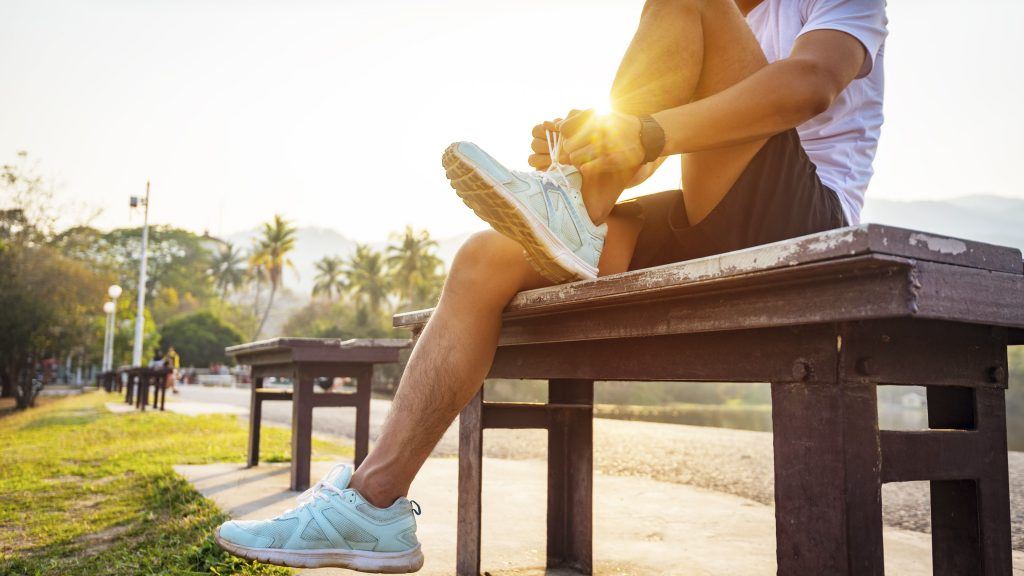Want to stay fit, boost your energy and feel better this summer?
…Just exercise!
As many of you prepare to jet off on holiday this summer, you may find that your exercise regime is slightly disrupted. You may not be in your usual routine or perhaps won’t have access to your regular classes or the gym, so you are wondering how to keep in shape and stay fit this summer. Here are a few ideas and guidelines on how much we should be doing to reap the benefits of exercise!
The health benefits of regular exercise are hard to ignore. Everyone benefits from exercise; regardless of age, sex or physical ability. So let’s look at these 6 benefits of exercise as outlined by the Mayo clinic. (May 2019)
1. Weight control
Exercise can help prevent excess weight gain or help maintain weight loss, by burning calories. The more vigorous the activity, the more calories you will burn, but that doesn’t mean you have to be going to the gym all the time. Any extra activity you do will help, so it might mean taking the stairs instead off the lift or going for a walk on the beach while you’re on holiday.
2. Combats health conditions and diseases
Being active boosts high-density lipoprotein (HDL) cholesterol, the “good” cholesterol, and it decreases unhealthy triglycerides, which decreases your risk of cardiovascular diseases.
Regular exercise helps prevent or manage many health problems and concerns, including:
- Stroke
- High blood pressure
- Type 2 diabetes
- Depression & Anxiety
- Many types of cancer
- Arthritis
- Falls
3. Improves mood
Physical activity stimulates various brain chemicals (endorphins) that may leave you feeling happier, more relaxed and less anxious. And perhaps more confident about your appearance which can help improve your self-esteem.
4. Boosts energy
Regular physical activity can improve your muscle strength and boost your endurance. Exercise delivers oxygen and nutrients to your tissues and helps your cardiovascular system work more efficiently. And when your heart and lung health improve, you have more energy to tackle the rest of your day
5. Promotes better sleep
Struggling to sleep? Regular physical activity can help you fall asleep faster, and get better and deeper sleep. Just don’t exercise too close to bedtime, or you may be too energised to go to sleep.
6. Exercise can be fun … and social!
Exercise and activity can be fun, especially on holiday when you may a chance to try out something totally new which may challenge your body in a different way, or give you a chance to engage with your friends and family while doing activities together
Guidelines on exercise:
Exercise and physical activity are great ways to feel better, boost your health and have fun. For most healthy adults, the Department of Health and Human Services recommends the following guidelines for adults:
- At least 150 minutes a week of moderate aerobic activity or 75 minutes a week of vigorous aerobic activity, or a combination of moderate and vigorous activity, which is best spread throughout the week
- Strength training exercises for all major muscle groups at least two times a week. Examples include lifting free weights, using weight machines or doing body-weight training or Pilates.
Suggested exercise:
1. Cardiovascular:
Running, walking, hiking or swimming, playing tennis may be things you can easily do while away, with no need for access to gyms or little additional equipment. Aim for 3 x 50-minute session per week to meet the 150-minute target.
2. Strength training
Here are 2 simple examples of strength training programs you can do while you are away:
PROGRAM 1 (Legs and bums)
- Parallel Squats x 10, then pulses for the count of 10. Repeat 3 sets

- Lunges x 8 on each side, pulses x 5

- In the lunge position, loop a band under the front foot and do bicep curls x 12 on each side

- Scooter x 12 each leg

- Skater x 12 each leg

- Bridge x 12 and add leg marches, keeping the pelvis level

PROGRAM 2: Abdominals and upper body strength
- Abdominal preparations (crunches) x15

- Leg pull in prone prep x 8

- Plank hold 30 secs, rest 20 secs. Repeat x 3

- Side plank Hold 30 seconds on each side

- Press ups on knees x 12

- Standing on band – biceps curls, arms straight out to the sides, arms reaching forwards and upwards x 12 each



Enjoy your summer breaks and keep your activity levels up if you can!
References:
Mayo clinic May 2019
Physical activity (adult). Rochester, Minn.: Mayo Foundation for Medical Education and Research; 2019.
Physical Activity Guidelines for Americans. 2nd ed. U.S. Department of Health and Human Services. https://health.gov/paguidelines/second-edition. Accessed Dec. 4, 2018.
Gilani SRM, et al. The effects of aerobic exercise training on mental health and self-esteem of type 2 diabetes mellitus patients. Health Psychology Research. 2019;7:6576.
Peterson DM. Overview of the benefits and risks of exercise. http://www.uptodate.com/home. Accessed July 2, 2013.
Nazarpour S, et al. Sexual function and exercise in postmenopausal women residing in Chalous and Nowshahr, Northern Iran. Iranian Red Crescent Medical Journal. 2016;18:e30120.
Simon RM, et al. The association of exercise with both erectile and sexual function in black and white men. Journal of Sexual Medicine. 2015;12:1202.
Laskowski ER (expert opinion). Mayo Clinic, Rochester, Minn. April 30, 2019.
Moore SC, et al. Association of leisure-time physical activity with risk of 26 types of cancer in 1.44 million adults. JAMA Internal Medicine. 2016;176:816.

